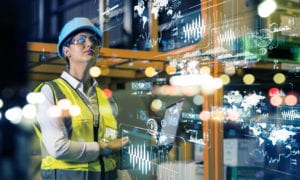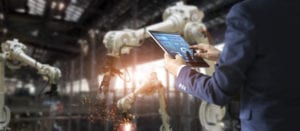The pandemic has exposed stark contrasts between supply chains that are flexible in the face of rapid change, and those that are not. Organizations that had digital smart supply chain operations in place before the pandemic generally remained in business, or even managed to grow. Those that were unable to quickly implement necessary process changes often found themselves losing market share.
Unfortunately, COVID-19 will not be our last crisis. Supply chains that are agile enough to weather crises will be critical for business survival moving forward. So it’s critical that companies both large and small think about these things and adapt – the sooner, the better.

What do smart, digital supply chains actually look like?
Well, at Schneider Electric we managed to navigate the troubled waters of the past 14 months thanks largely to a smart supply chain digitization plan we launched several years ago.
Our initial goal had been to streamline our supply chain operations, in order to provide our customers more convenience, and a stable, predictable supply chain that would allow them to be in lockstep with what their own customers were demanding.
These transformation efforts have now evolved into a strategy we call STRIVE. This stands for Sustainability, Trust, Resilience, Intelligence, Velocity, and Efficiency, and it aims to provide customers with a strong regional presence, encourage an agile mindset among our own people, and build stronger partnerships with leading suppliers. Here are 3 key benefits we will see from our STRIVE program:
How STRIVE enables optimization of smart supply chain benefits
In essence, STRIVE focuses on the three ways our smart supply chain operations can help customers and partners:
1. Providing business continuity – Our teams focus on both operational resilience and business resilience.
Operational resilience is all about maintaining predictable operations regardless of external environmental conditions such as extreme weather or health crises. To that end, we’ve provided supply chain workforce with the tools they need to perform their jobs remotely, using mobile devices to monitor operations. Our factory floor and distribution center machines are also equipped with sensors that are linked to our open software architecture. This enables our service teams to perform predictive maintenance, allowing us to drastically reduce machine downtime, even when few humans are on the ground.
Business resilience is all about maintaining a high level of customer satisfaction. Most of our customers today prefer a highly personalized experience. In fact, our research shows that customers pay even more attention to overall experience than they do to price or product quality, though those, too, remain critically important. So we use artificial intelligence to comb through our product delivery and customer interaction data, to draw a clearer picture of who our customers are, and help analyze how we can better support their buying experience.
2. Offering increased end-to-end supply chain visibility
We’ve invested heavily in tools that track the journey of our products from their inception right through to their arrival at the customer site.
This has helped us to both “shorten” and “smarten” the supply chain. For example, many of our products used to go through three or four distribution centers before arriving at the customer’s doorstep.
Now, we can monitor their progress to ensure that they only go through one – which means faster delivery to the customer. One of our strategies that allows this to happen is a new focus on building up our regional presence.
We now look very closely at where a supplier is located, vis-a-vis where our factory is located, and cross check that with where our customer is located. We also make sure that we always have duplicate supply chain resources to fall back on if needed.
3. Maintaining sustainable operations
Sustainability isn’t just about manufacturing sustainable, climate-friendly products. It also means working with supply chain partners to extract energy savings and other benefits throughout the entire product creation, delivery and support life cycle.
Take energy usage. By the end of this year, we will source 80% of our energy from renewables – up from 30% just a few years ago. Our goal is to serve as a role model to our suppliers: In fact, we’re challenging our 1,000 top suppliers to reduce their own CO2 emissions by 50% by 2025.
Many are beginning to issue formal, public reports regarding their CO2 footprints. They’re motivated not just by us, but also because their own customers and shareholders demand lower emissions and higher accountability.
For more information
To learn more about how your organization can leverage digitization to create a smart supply chain to enhance business resilience, end-to-end visibility, and sustainability visit our smart factory website.
************
If you want to know more about smart Supply Chain, I invite you to read the following articles:


